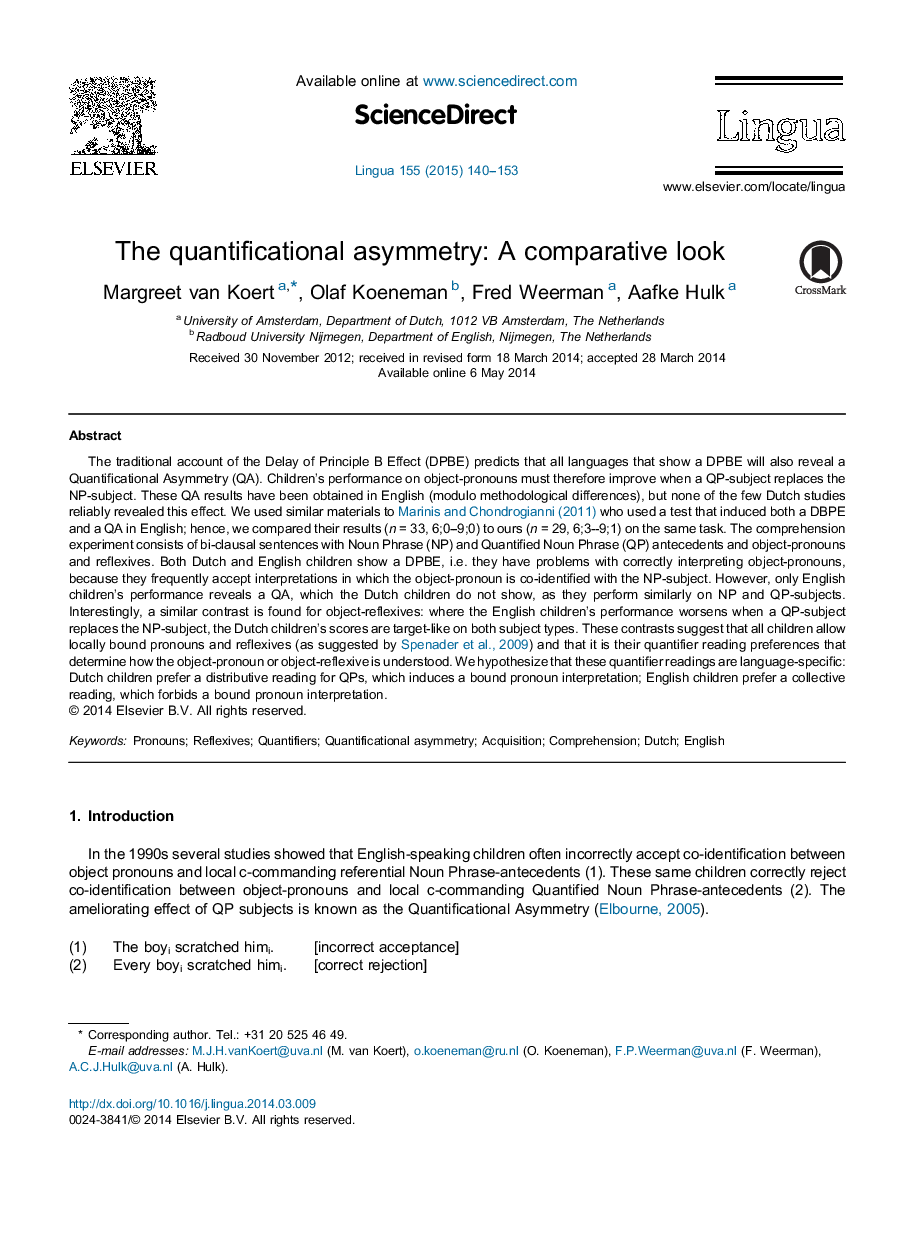| کد مقاله | کد نشریه | سال انتشار | مقاله انگلیسی | نسخه تمام متن |
|---|---|---|---|---|
| 935703 | 1475055 | 2015 | 14 صفحه PDF | دانلود رایگان |
• The quantificational asymmetry is a language-specific phenomenon.
• English children prefer to give a collective reading to the quantifier.
• Dutch children prefer to give a distributive reading to the quantifier.
• All children allow locally bound pronouns.
The traditional account of the Delay of Principle B Effect (DPBE) predicts that all languages that show a DPBE will also reveal a Quantificational Asymmetry (QA). Children's performance on object-pronouns must therefore improve when a QP-subject replaces the NP-subject. These QA results have been obtained in English (modulo methodological differences), but none of the few Dutch studies reliably revealed this effect. We used similar materials to Marinis and Chondrogianni (2011) who used a test that induced both a DBPE and a QA in English; hence, we compared their results (n = 33, 6;0–9;0) to ours (n = 29, 6;3–9;1) on the same task. The comprehension experiment consists of bi-clausal sentences with Noun Phrase (NP) and Quantified Noun Phrase (QP) antecedents and object-pronouns and reflexives. Both Dutch and English children show a DPBE, i.e. they have problems with correctly interpreting object-pronouns, because they frequently accept interpretations in which the object-pronoun is co-identified with the NP-subject. However, only English children's performance reveals a QA, which the Dutch children do not show, as they perform similarly on NP and QP-subjects. Interestingly, a similar contrast is found for object-reflexives: where the English children's performance worsens when a QP-subject replaces the NP-subject, the Dutch children's scores are target-like on both subject types. These contrasts suggest that all children allow locally bound pronouns and reflexives (as suggested by Spenader et al., 2009) and that it is their quantifier reading preferences that determine how the object-pronoun or object-reflexive is understood. We hypothesize that these quantifier readings are language-specific: Dutch children prefer a distributive reading for QPs, which induces a bound pronoun interpretation; English children prefer a collective reading, which forbids a bound pronoun interpretation.
Journal: Lingua - Volume 155, February 2015, Pages 140–153
